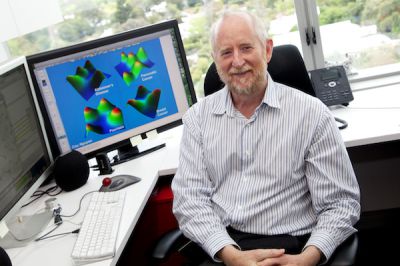
A ‘Gene Mine’ developed by UWA Professor Grant Morahan at the Harry Perkins Institute of Medical Research has enabled a breakthrough in the fundamental understanding of chemical biology which will change the way chemistry textbooks are written in future.
The discovery, published today in the world renowned scientific journal, Nature Chemical Biology, was made by the Perth team and researchers at the University of Zagreb, Croatia.
The research has the potential to impact our understanding of how the body reacts to diseases such as auto immune diseases, infectious diseases and cancer.
The two teams combined two different areas of medical research, genetics and the new field of “glycomics”.
Genetics looks at the markers that are common to a group of individuals who share a disease or trait, and are not shared by those who are not affected, whereas glycomics looks at the complex group of sugar molecules attached to proteins and which vary with different diseases.
Professor Morahan, who is the Director of Centre for Diabetes Research at the Harry Perkins Institute of Medical Research, is a genetics researcher has produced the Gene Mine, an ambitious project that has developed over the past 15 years to harness the entire mouse genome for accelerating medical research discoveries.
“We provided the group in Croatia with blood samples from the gene mine strains. They analysed these for sugar groups and then with that data we did genetic analysis to identify five genes.
“They found that there was more diversity in the sugars of the Gene Mine samples than they had previously found in studies of tens of thousands of human samples.
“Our analyses of these data allowed discovery of five genes that were responsible for the addition of different sugar groups to proteins.
“Researchers had known that there was a wide range of diversity in the structure of sugars but it had not been known why certain sugars are attached to particular proteins and why that combination has been important.
“The puzzle has been, why has this particular sugar attached to this particular protein.
“Previously research had identified the points in protein molecules which the sugar is going to attach to but we didn’t know how that particular sugar was selected.
“There’s some evidence that different sugar groups attached to antibody molecules can cause different downstream consequences in a person’s immune response to different diseases.
“For example some sugars help with an inflammatory response to disease, others influence a non-inflammatory response and there are differences in sugars in different diseases,” he said.
“The five genes discovered are different. Some encode antibody molecules, others encode enzymes that are used to add sugars to proteins.
“And we were able to identify particular variants in proteins that affected which sugar groups were added so this is a new discovery, and now we’re getting a sense that the proteins themselves dictate what sugar group can be added to them.
“By understanding how the sugars are regulated then that can impact our responses to all these diseases,” Professor Morahan said.
This discovery lays the foundation for further developments in the science of glycomics and a greater understanding of disease.
